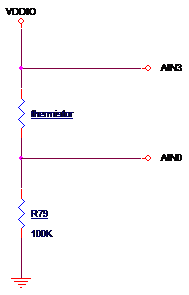Other Parts Discussed in Thread: ADS122C04, ADS1219
Hi Sir,
I have same questions need to help.
Our product is the analog thermopile (TO-CAN46 type, 4 pins).
4 pins => TS+, TS- (thermistor), TP+, TP-(thermopile).
The thermopile differential output voltage is about 2mV and thermistor resistance is 100kohm (when temperature object = 50C, temperature ambient = 25C).
How can I use the ADS122C04EVM to measure the thermopile differential output voltage and thermistor resistance?
(a) thermopile differential output voltage is about 2mV
AINP=AIN0=TP+, AINN=AIN1=TP-, and I connected AIN1 to 2.048 voltage from external power supply.
VREF setting = internal 2.048V reference
Calculation => V(mv) = ADC code * VREF / 2^23 / Gain * 1000
For these setting and processes , that’s right?
(b) Thermistor resistance is 100kohm
I reference to document section 5-1-1 (2 wire RTD measurement) of “SBAU297 – ADS1X2C04 Evaluation Module ‘’.
And follow Scripts 2-wire RTD setting of Delta-sigma ADC Evaluation software.
Calculation => R(RTD) = (2*R77*ADC code / PGA) / (2^24-1).
But ADC code measurement result is very big. Always is 8388607.
Could you give me some advice about thermistor resistance?
(c) ADS122C04 spec
ADS122C04 spec => VREF = differential reference input voltage = 2.5V
And EVM board JP17- VREF is supplied by 2.5v onboard reference (U24)
ADS122C04 internal VREF 2.048V reference.
What’s difference about 2.048 and 2.5v and when to use ?



